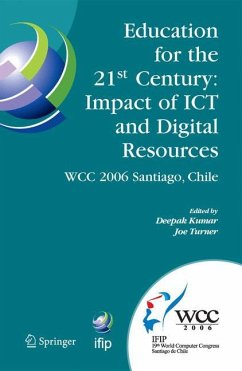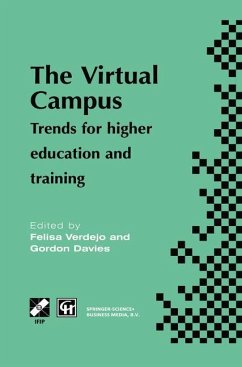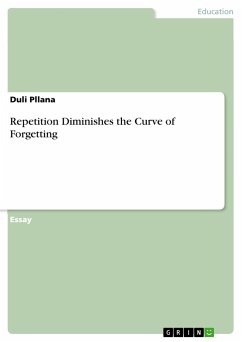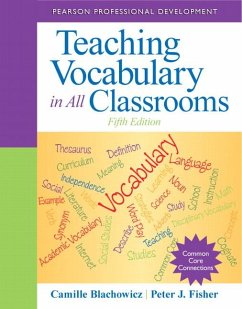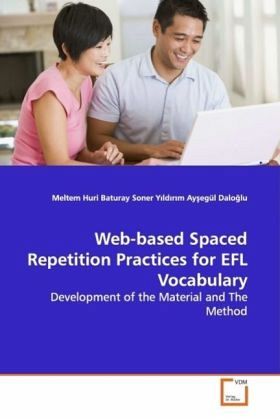
Web-based Spaced Repetition Practices for EFL Vocabulary
Development of the Material and The Method
Versandkostenfrei!
Versandfertig in 6-10 Tagen
52,99 €
inkl. MwSt.

PAYBACK Punkte
26 °P sammeln!
Vocabulary retention is one of the most problematicissues which foreign language learners face. Thisbook aims to demonstrate that technology mightenhance and improve retention of vocabulary forforeign language learners with spaced repetitions notonly once but over an extended period of time invarious contexts. It consists of two main parts: thedevelopment of the web-based material, WEBVOCLE,through users feedbacks and the effects of thematerial on learners learning outcomes. In aweb-based environment, learners were exposed topre-learned words in different contexts withinteractive exercises suc...
Vocabulary retention is one of the most problematic
issues which foreign language learners face. This
book aims to demonstrate that technology might
enhance and improve retention of vocabulary for
foreign language learners with spaced repetitions not
only once but over an extended period of time in
various contexts. It consists of two main parts: the
development of the web-based material, WEBVOCLE,
through users feedbacks and the effects of the
material on learners learning outcomes. In a
web-based environment, learners were exposed to
pre-learned words in different contexts with
interactive exercises such as matching, gap-filling,
cloze tests etc. which would help them become
familiar with the meaning and usage of words by
practicing and rehearsing in various contexts. The
book provides implications relevant for the design of
multimedia and foreign language instruction which
might be made use of by other practitioners and
educators. It reveals every phase of the construction
of the web-based material which is thought to be
valuable for other researchers who intend to develop
and implement such materials.
issues which foreign language learners face. This
book aims to demonstrate that technology might
enhance and improve retention of vocabulary for
foreign language learners with spaced repetitions not
only once but over an extended period of time in
various contexts. It consists of two main parts: the
development of the web-based material, WEBVOCLE,
through users feedbacks and the effects of the
material on learners learning outcomes. In a
web-based environment, learners were exposed to
pre-learned words in different contexts with
interactive exercises such as matching, gap-filling,
cloze tests etc. which would help them become
familiar with the meaning and usage of words by
practicing and rehearsing in various contexts. The
book provides implications relevant for the design of
multimedia and foreign language instruction which
might be made use of by other practitioners and
educators. It reveals every phase of the construction
of the web-based material which is thought to be
valuable for other researchers who intend to develop
and implement such materials.




